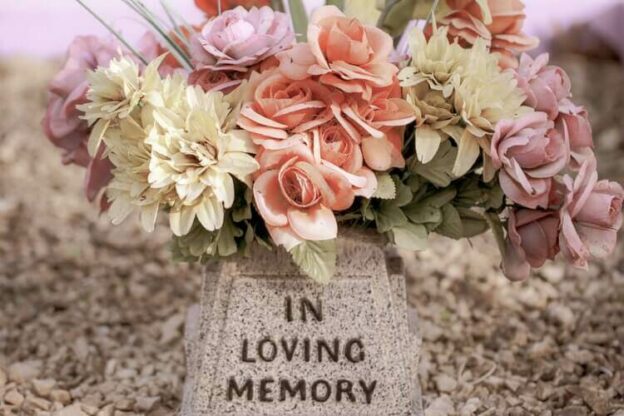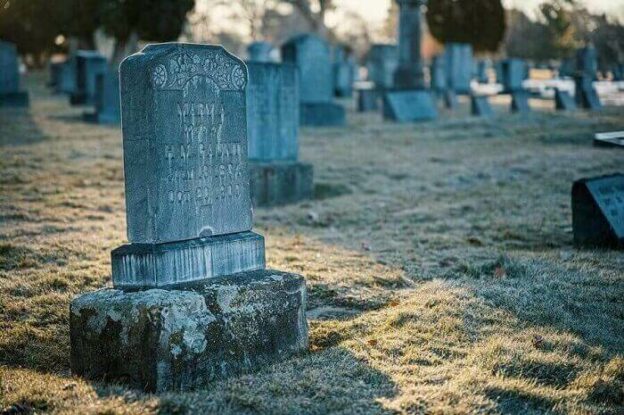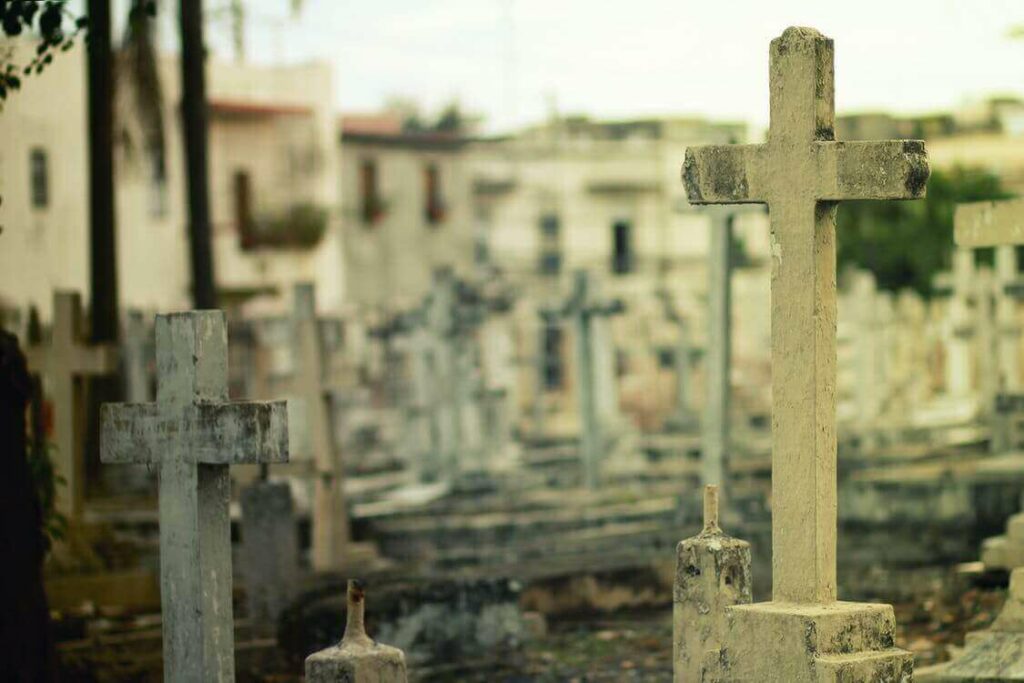Monthly Archives: November 2022

The Five Stages of Grief After Cemetery Services
The five stages of grief are a well-known blueprint that helps people understand how they grief and offers guidance on how to get through a loss and a service at a cemetery in Charlotte, NC. But what are they? How can they help you through your grief journey?
Grief doesn’t come all at once or all in the same way, it often moves through stages: Denial, Anger, Bargaining, Depression, and Acceptance. Dr. Elisabeth Kubler-Ross, a Swiss-American psychologist, first developed these five stages in 1969 to help illustrate that fact that, while every human experience grief differently, almost everyone moves through one or many of these five stages at some point in the grieving process. Some people might move through all, others just one, and more still might experience only a few. While it’s not a comprehensive guideline, the five stages of grief do help, comfort, and basic understanding of how we experience grief and how that experience changes over time.
The order of the five stages isn’t necessarily important, as people might experience them in varying orders and intensities, even moving back and forth between them. Denial is when you don’t want to believe or an unable to believe that your loved one has died. The “this can’t be happening to me” reaction is very normal, and is usually the first reaction after a loss. Denial can also come in the form of telling people you’re fine even though you’re not because you’re denying your true feelings of grief.
Anger generally sets in when you realize you can’t deny or fight the loss any longer. You might become angry at the people around you, taking your anger out on doctors and nurses who “failed” your loved one or on yourself for making a mistake that might have led to or worsened the situation. Some even direct their anger toward God or a higher power. Bargaining is when you deny the truth by trying to change it. It might manifest as trying to get the doctors to bring in another expert or try a new treatment, or as pleading with God or a higher power for more time or a different outcome.

Like the name sounds, depression is when you feel hopeless or that you can’t go on because of the loss. You might feel overwhelmed, alone, and lost. The final stage, acceptance is where you come to terms with the fact that your loved one is or is going to be gone. The grief and pain don’t go away in this stage, but you do accept and feel those feelings. When you reach the fifth stage of grief, you begin to plan on how you will move on with your life.
The five stages of grief are a helpful tool for anyone dealing with a loss or a service at a Charlotte, NC cemetery. Do you need help with your needs in this time of loss? We are here to help. Call or visit us today.

Tips for Gravesite Decoration
Keeping your lost loved one’s grave beautiful at a cemetery in Matthews, NC can go a long way towards helping you work through your grief and loss. But how do you decorate or personalize a gravesite?
Use these tips to help guide you as you decorate your lost loved one’s gravesite and honor their memory. But remember, at the end of the day, whatever décor you choose should be focused on the deceased and their life.
Keep It Well Lit and Visible – Small items left on gravesites are often accidentally stepped on or destroyed by the cemetery caretakers. Make sure your items are either big enough to attract attention or well-lit.
Consider Faith and Culture – Another great way to find gravesite decoration inspiration is to look to the deceased’s faith and culture. Honor their heritage and beliefs with décor, and be sure not to leave something that would be offensive to their faith.
Check Cemetery Rules – Most cemeteries have guidelines for what can and cannot be left on graves. Be sure to check with your cemetery before leaving any decorations.
Consider the Weather – You want to avoid leaving something that will spoil in the hot sun during the summer, or something that will freeze and break during the cold winter. Think about the season and the weather when choosing your décor.
Think About the Season – A great place to start with gravesite décor is with the season. For example, create a Christmas or Hannukah decoration around the holidays or set up a pumpkin-inspired scene in the fall.
Choose Durable or Permanent Decorations – Don’t leave anything on the grave that will become dirty or damaged if left outside in the elements. Instead, opt for materials that are tough in the face of wind, rain, sun, heat, or cold.
Come Back and Check – If you choose to leave décor on your lost loved one’s gravesite, be sure to come back and check on it regularly. Replace worn out or damaged decorations so the grave doesn’t become an eyesore.

Mind the Rules – While every cemetery will most likely have their own unique rules and guidelines for what can and cannot be left on gravesites, there are common items that you should always avoid using in gravesite décor, like glass can break and cause injuries. You should also avoid unsecured or lightweight décor. If the decorations won’t stay put, they could end up all over the cemetery, which is disrespectful to other mourners and causes extra work for the staff. Don’t forget to skip mylar or latex balloons as well as fences. These materials are very dangerous for animals. Instead, try blowing bubbles, leaving garden spinners, or using biodegradable materials. Don’t put up a fence or blocker of some kind around the grave as it will prevent the employees from performing maintenance.
We are here to help if you want more tips on decorating gravesites or Matthews, NC cemeteries. Call or visit us today to learn more about what we can do for you in your time of loss or preplanning.

Decorating a Cemetery Gravesite
Decorating your lost loved one’s gravesite at a Huntersville, NC cemetery is a great way to remember their well-lived life and honor their passing. But do you know where to start when it comes to decorating a gravesite? Here are some uplifting and unique gravesite decoration ideas to inspire you for your loved one’s final resting place:
- Floral Saddle – A cemetery saddle is a flower arrangement resting on a metal “saddle.” It has legs so it can balance on top of the headstone.
- Solar Flowers – Solar flowers are fake flowers that light up at night after charging throughout the day in the sun.
- Personalized Flower Vase – Instead of a standard vase, invest in a personalized one that features a special message to your loved one, an etching, or any kind of meaningful inscription.
- Memorial Candles – Flameless battery or solar powered candles are just as beautiful as real candles, but are much safer and longer-lasting.
- Personalized Photo Lantern – You can order custom lanterns that are printed with a photo of your lost loved one. Place a flameless candle inside the lantern and leave it on the grave to light up at night.
- Fresh Flowers – Even a simple, fresh bouquet that you leave once a week mean a lot. Plus, they give you a chance to visit the gravesite often.
- Preserved Flowers – Keep the flowers on your lost loved one’s grave fresh forever by preserving them. Order a custom preserved bouquet in resin, or purchase a paperweight orb with flowers inside.
- Candle Figurines – Buy a candle figurine that holds any candles you choose and represents a meaningful image, like an angel, animal, or symbol. You can even repurpose an old jar or mason jar by filling it with candles or twinkle lights.
- Homemade Tributes – Nothing is more meaningful than a homemade tribute like handwritten notes, paintings, drawings, or even typed up poems or memories.
- Memorial Stones – Stones have been used in memorialization for centuries. There are even examples in the Bible. Paint a stone yourself or order one online.
- American Flag – If your lost loved one was a veteran, plant an American flag or the flag of their armed forces division.
- Grave Blankets – Grave blankets are painted with grass, foliage, or flowers so they can make the grave green and lovely even in the winter months when it’s too cold for fresh plants.
- Personalized Flag – Place a flag in the ground near the gravesite with a personalized photo, message, or image. Add dates to make it even more personal.
- Memorial Benches – If the cemetery allows, place a memorial bench near the gravesite so you always have a place to sit and remember fond days when visiting.

These are just a few of the many ways you can decorate your lost loved one’s gravesite. We are here to help if you want more inspiration or information on Huntersville, NC cemeteries. Call or visit us today to learn more about what we can do for you in your time of loss or preplanning.

Embalming
Whether you’re having a cremation or a service at a cemetery in Charlotte, NC, it’s helpful to be aware of the basics of embalming.
Embalming is the preservation of human remains to slow decomposition and disinfect the body. The process is thought of as both an art and a science as it requires great skill and experience. Bodies are usually embalmed so they’re suitable for a viewing before a cremation or funeral service. They are also used to preserve bodies for medical purposes, whether for a laboratory or a medical school. Embalming is frequently required by state law or funeral home regulations. Some states legally require refrigeration or embalming if a body is not cremated or buried within a certain period of time after a death, while other states leave the requirements up to the funeral homes. While the exact laws and regulations vary, best practices are to bury or cremate a body within a few days of death or embalm it.
There are two main kinds of embalming, arterial and cavity, but both are usually used in the standard embalming process. Arterial embalming involves removing the blood from the veins and replacing it with the embalming solution. In other words, the blood is flushed out of the veins and arteries by the fluid. Cavity embalming is when the internal fluids are removed with tools called trocars and aspirators.
While each embalming expert might have his or her own preferred technique, here are the general steps of the embalming process. The first step is to wash and disinfect the body. The embalmer will also massage the arms and legs to ease rigor mortis and perform any necessary shaving. Next, it’s time to set the features. The embalmer sets the body’s features by closing the eyes and positioning the mouth. The eyes are often held shut by plastic caps and the mouth is usually wired or sewn shut. The next step is to inject the embalming fluids and cavity embalming. An incision is made in the right common carotid artery and the right jugular vein in order to pump about two gallons of a formaldehyde solution through the body. As the solution is injected, it pushes the blood out of the veins and into a drain attached to the jugular. Bodily fluids and remaining gas are removed from the internal organs, like the bladder, intestines, and stomach, by a suction hose and a trocar. A trocar is an instrument with a three-sided point attached to a tube for removing fluids. After the fluids are removed, the embalmer injects embalming fluid to preserve the body and help it hold its shape.

Finally, the embalmer then closes up any incisions made in the embalming process, gives the body a bath, and then dresses it. After about 24 hours, he will return to seal the incisions with a bonding adhesive to prevent leaks, apply makeup, and fix the hair.
We are here to help if you have more questions on embalming or Charlotte, NC cemeteries. We’re happy to offer our expertise and compassionate services in your time of loss or preplanning.

